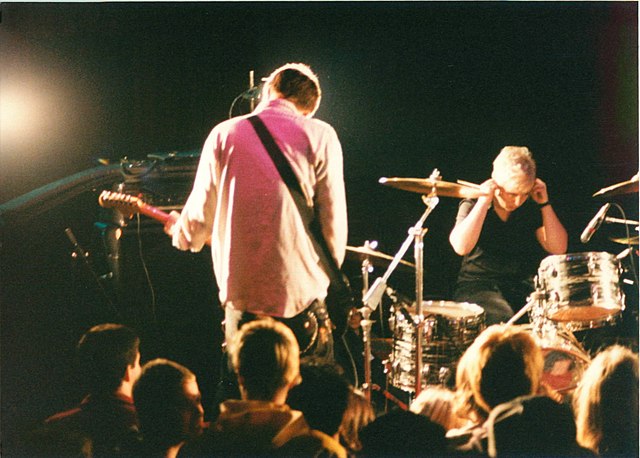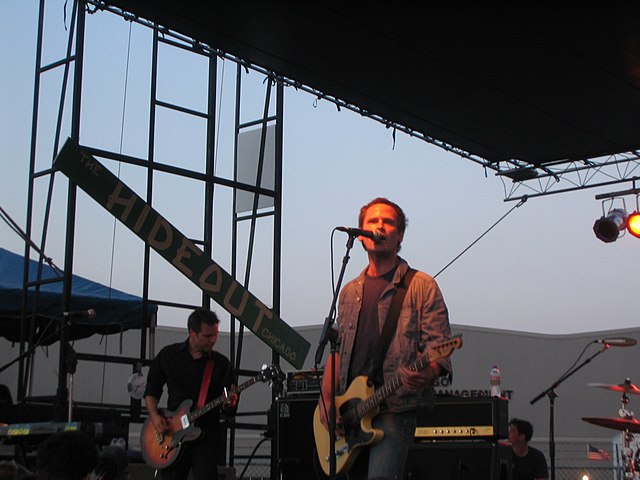Unwound is an American post-hardcore band. Formed in 1988 in Tumwater and Olympia, Washington, the band currently consists of Justin Trosper, Jared Warren, Sara Lund (drums), and Scott Seckington (guitar).
Drummer Lund and bassist Vern Rumsey
Trosper & Lund performing as Unwound in 2023
Post-hardcore is a punk rock music genre that maintains the aggression and intensity of hardcore punk but emphasizes a greater degree of creative expression. Like the term "post-punk", the term "post-hardcore" has been applied to a broad constellation of groups. Initially taking inspiration from post-punk and noise rock, post-hardcore began in the 1980s with bands like Hüsker Dü and Minutemen. The genre expanded in the 1980s and 1990s with releases by bands from cities that had established hardcore scenes, such as Fugazi from Washington, D.C. as well as groups such as Big Black, Jawbox, Quicksand, and Shellac that stuck closer to post-hardcore's noise rock roots. Dischord Records became a major nexus of post-hardcore during this period.
The band Naked Raygun in 2012
Fugazi during their last pre-hiatus tour, 2002. The band's influence was summarized by reviewer Andy Kellman with the following statement: "To many, Fugazi meant as much to them as Bob Dylan did to their parents."
Post-hardcore band Girls Against Boys in 2006
Unwound emerged from Olympia, Washington.





